Parts of a Watch: A Beginner’s Guide
Watches are timeless accessories that have been around for centuries, serving as both functional timekeepers and fashionable accessories. While watches may seem simple at first glance, they are actually complex mechanical devices made up of many intricate parts that work together to tell time.
Understanding the different parts of a watch can help you make an informed decision when purchasing one, as well as provide a deeper appreciation for the timepiece itself. This beginner’s guide will break down the key components of a watch, from the face and hands to the movement and crown.
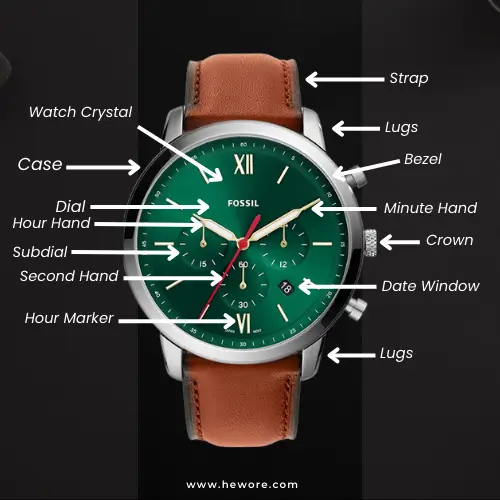
Let’s start with the watch case.
Contents
1. Watch Case
The watch case is the outer shell of a watch that protects its internal components, including the movement and dial. It is the main component that gives a watch its style and shape, and it is often made of a variety of materials, including stainless steel, titanium, gold, and others.
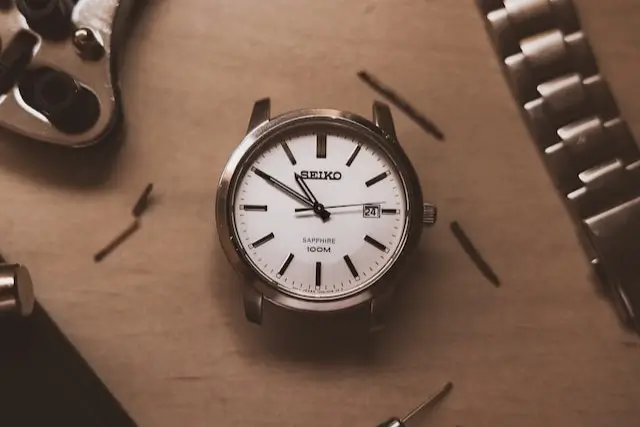
The watch case serves as the foundation for the watch, holding all of its other parts in place, and it also provides a water-resistant barrier that helps to keep the watch protected. The watch case is available in a range of sizes, shapes, and styles, and it is one of the key elements that determine the overall look and feel of a watch.
2. Watch Bezel
The watch bezel is the ring surrounding the dial of a watch, serving to protect the crystal and hold it in place. It also often features markings for measuring elapsed time, or decorative embellishments to enhance the appearance of the watch.
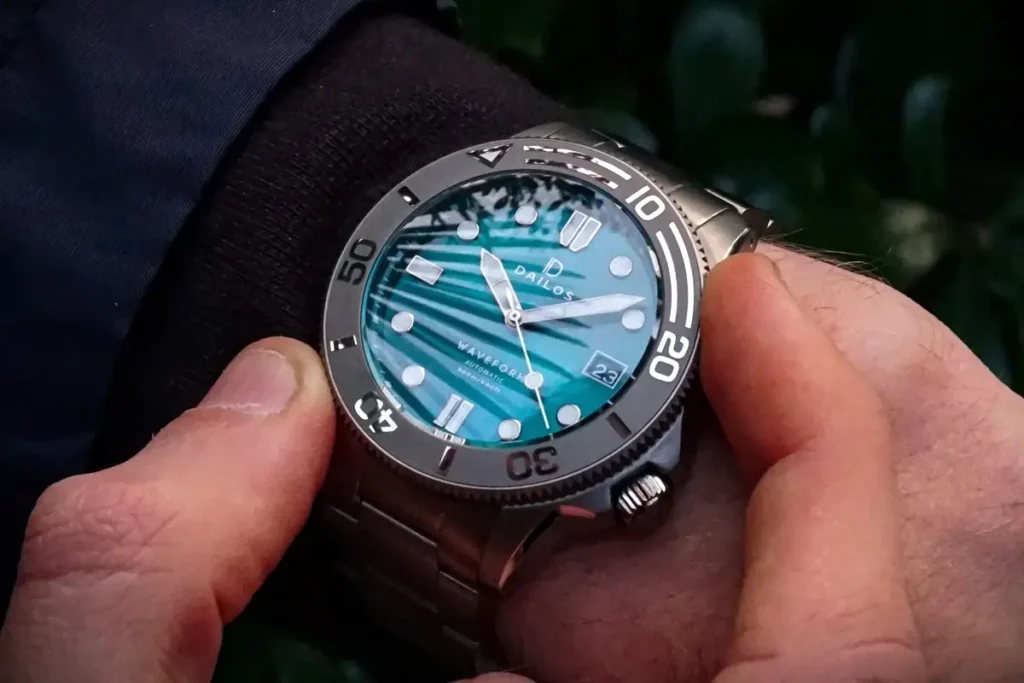
The bezel can be made of various materials, including metal, plastic, or ceramics, and may be fixed or rotatable. It is an important component of the watch and contributes to the overall style and functionality of the timepiece.
Note: For further information on watch bezels, check out our previous blog posts covering the various types of bezels and materials used for bezel inserts.
3. Watch Crown
The crown of a watch is a small button located on the side of the case and serves as a means of adjusting the time and date on the watch. It can also be used for winding the watch if it is a manual-winding mechanism. The crown is an essential part of a watch and its design and function can vary depending on the type of watch and its intended use.
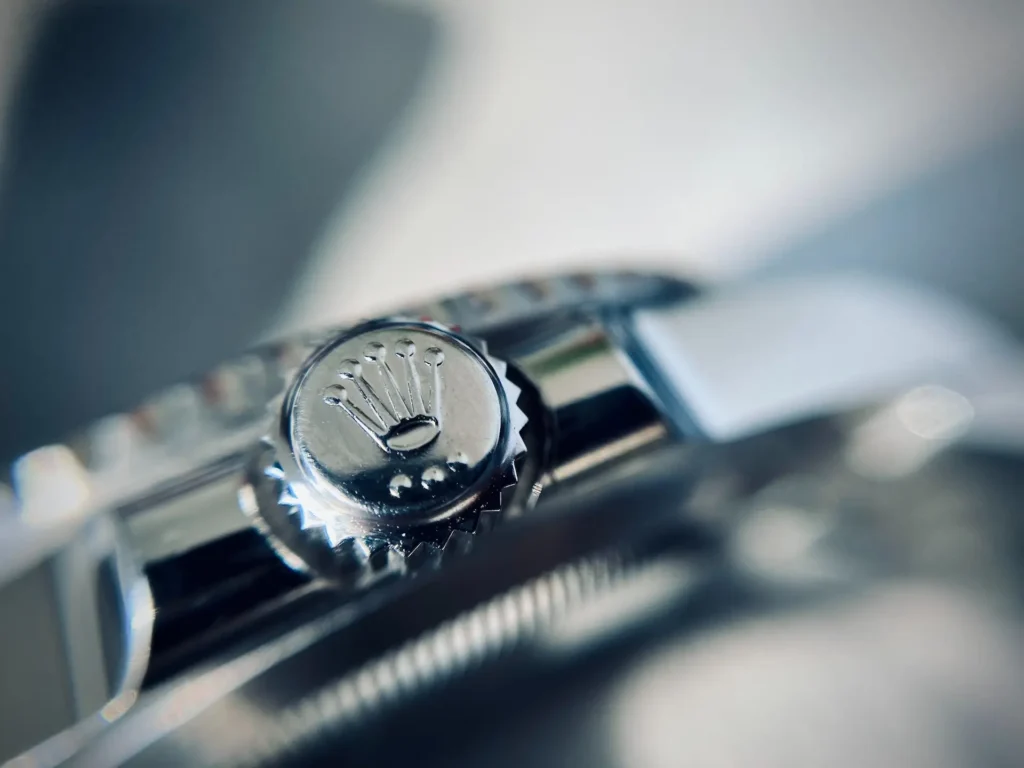
Some crowns are screw-down, meaning they screw into the case to create a water-resistant seal, while others are push-pull, which are simply pulled out to adjust the time and date. The shape and size of the crown can also vary and can be an important factor in the overall style and look of a watch.
4. Watch Lugs
Lugs are the metal extensions on the top and bottom of a watch case that serve as attachment points for the watch strap or bracelet. They are important parts of a watch as they not only hold the strap in place but also help to secure the watch to the wrist.
There are different styles of lugs, including curved, angled, and straight, and each style can affect the overall look and comfort of the watch.
5. Watch Dial
The watch dial is the face of a timepiece that displays the time and any additional functions. It is the most visible part of a watch and contributes greatly to its overall appearance.
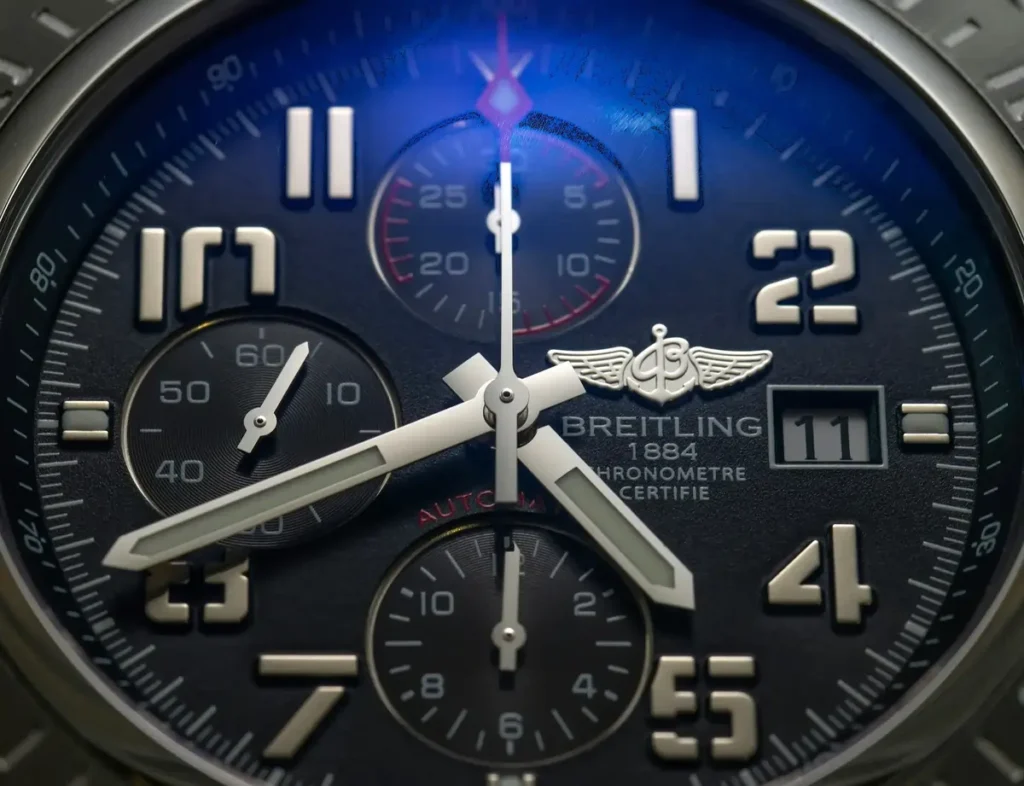
The design, color, and material of the dial can vary greatly, giving each watch its unique personality and style. The dial also holds the hands, markers, and any other indicator that displays the time.
6. Watch Subdials
Subdials, also known as small dials or complication dials, are an additional feature often found on watch faces. These smaller dials can display information such as the seconds, chronograph readings, or even the date. They add a level of complexity and style to a watch, making it stand out and attract attention.
Some watches even have multiple subdials, which can be used to display a variety of information all at once. The inclusion of subdials allows for added functionality in a watch, making it more versatile and useful for a range of activities.
7. Watch Hands
The watch hands, also known as the pointers, play an important role in telling time. There are three main types of watch hands: hour, minute, and second hands. The hour hand points to the hour markers on the dial, the minute hand points to the minute markers, and the second-hand points to the second markers.
The size, color, and shape of the hands vary among different watch designs, giving each watch its unique appearance. Some watches may also have additional hands for additional functions, such as a chronograph or a GMT function. The watch hands must be precisely aligned with the markers and powered by the watch’s movement to accurately tell time.
8. Day & Date Windows
The day and date window on a watch is a feature that displays the current day of the week and date. This feature can be found on many quartz and mechanical watches and is usually located at the 3 o’clock or 6 o’clock position on the dial.
Some watches have a quickset day and date feature, allowing the user to easily change the date by pulling out the crown and turning it. The day and date window is a convenient and practical feature, especially for those who need to keep track of both the time and the date.
Note: Some timepieces display only the date, while others feature both the date and day.
9. Watch Crystal or Glass
The watch crystal or glass refers to the clear cover over the dial of a watch. It serves as protection for the watch’s delicate components, while also allowing the wearer to view the time easily.
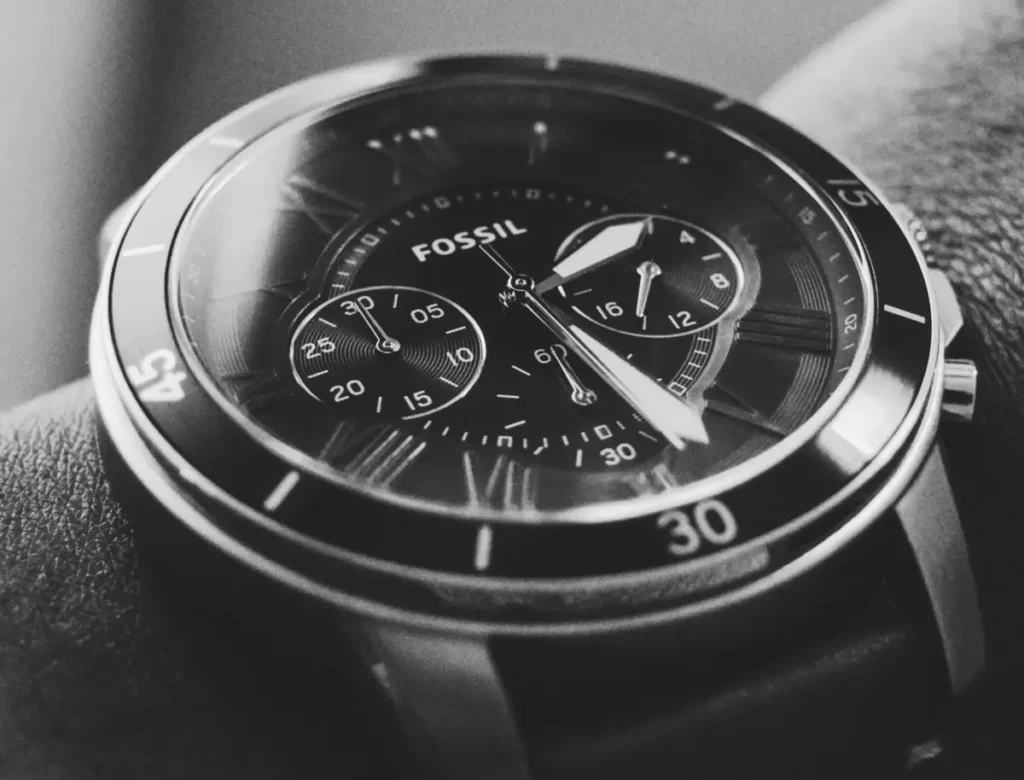
The watch crystal comes in different materials, including mineral glass, sapphire crystal, and acrylic. Each type impacts the watch’s durability and scratch resistance, with sapphire offering the highest protection.
10. Watch Straps & Bracelets
Watch straps & bracelets are an integral part of a watch and are responsible for securing the timepiece to the wrist. They come in a variety of materials including leather, metal, fabric, and rubber, allowing for personalization and style options
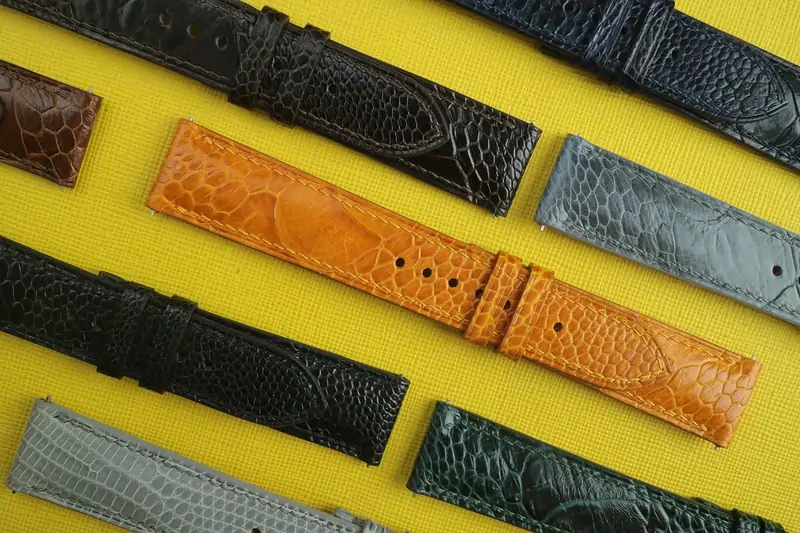
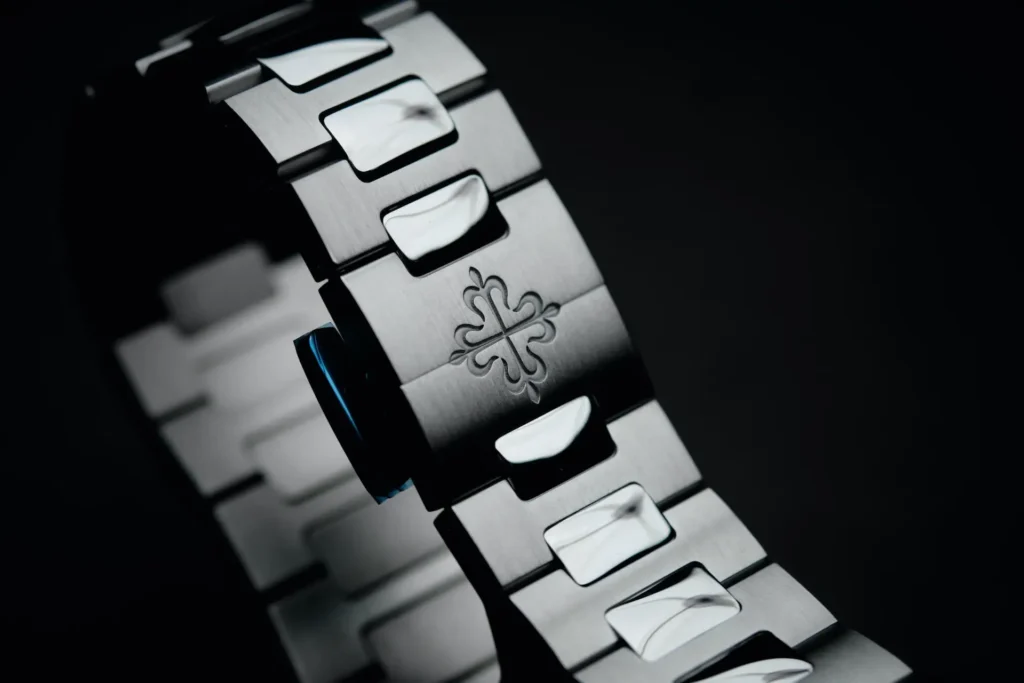
The choice of a strap or bracelet can greatly affect the overall look and feel of a watch, making it an important aspect to consider when purchasing a timepiece. It is important to choose a strap or bracelet that is both comfortable and durable, as it is in constant contact with the skin.
Related Article: Different Types of Watch Straps
11. Clasps or Buckles
Clasps and buckles are essential components of watch straps or bracelets, providing the secure and comfortable closure of the watch on the wrist. They come in various designs, shapes, and materials to match the style and needs of the watch wearer.
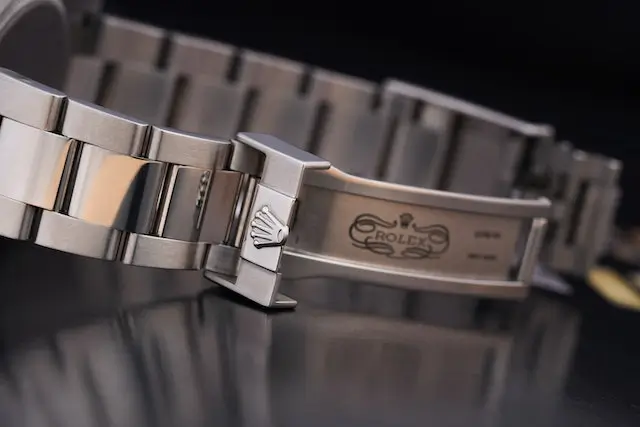
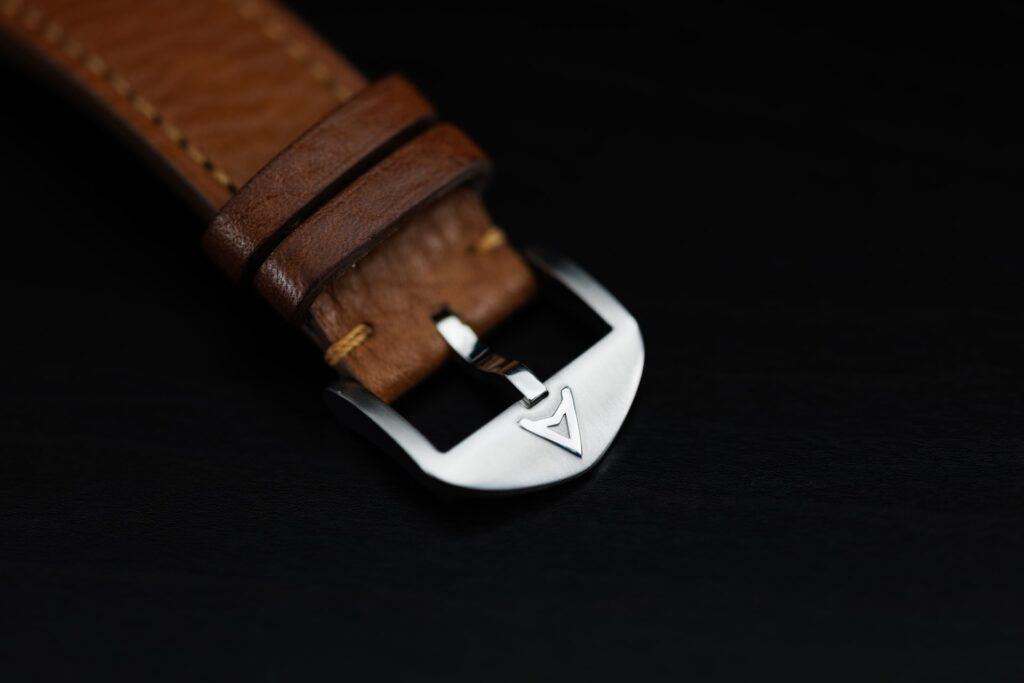
Some common types of clasps or buckles include fold-over clasps, deployment clasps, butterfly clasps, and pin buckles. Each type of clasp or buckle offers different benefits such as easy-to-use, quick-release, or adjustable fit.
12. Watch Casebacks
The watch caseback, also known as the watch back, is part of a watch that covers the movement. It can be made from a variety of materials, including stainless steel, titanium, and even sapphire crystal.
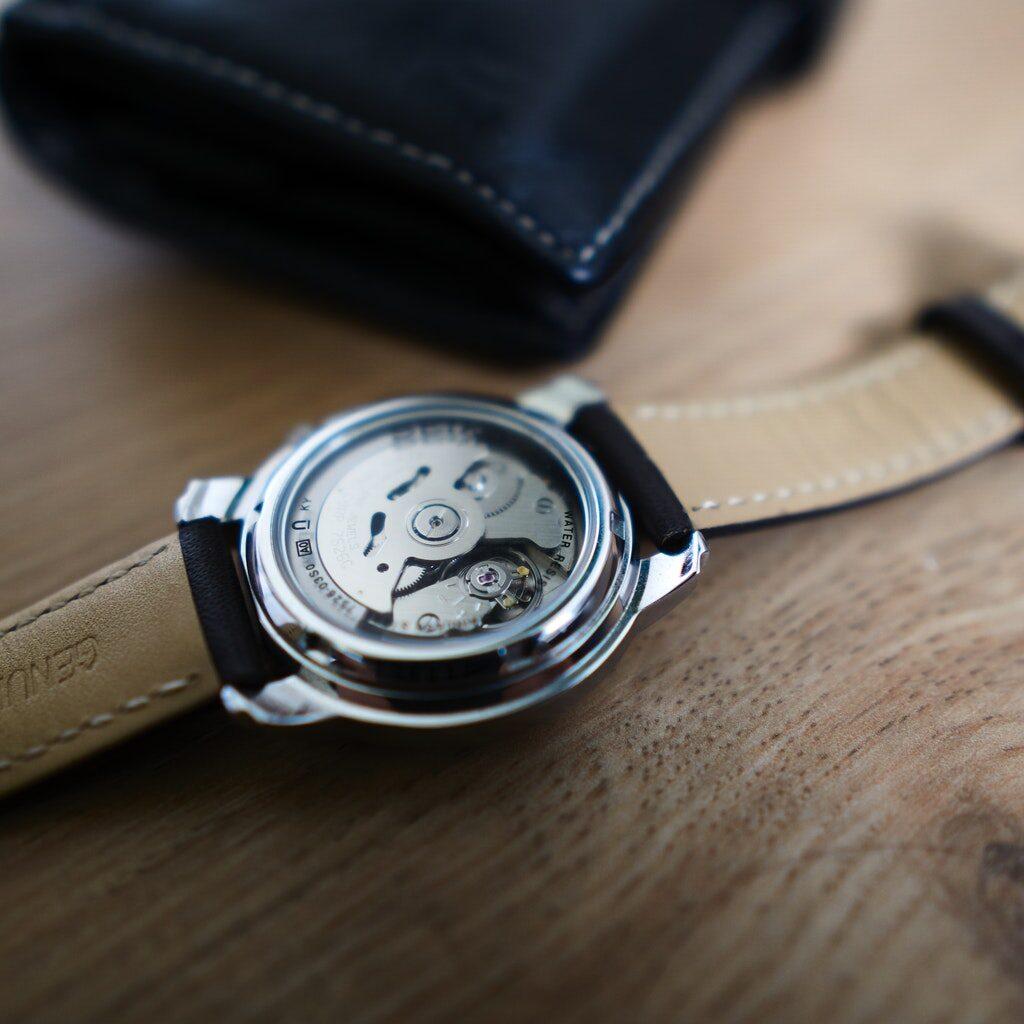
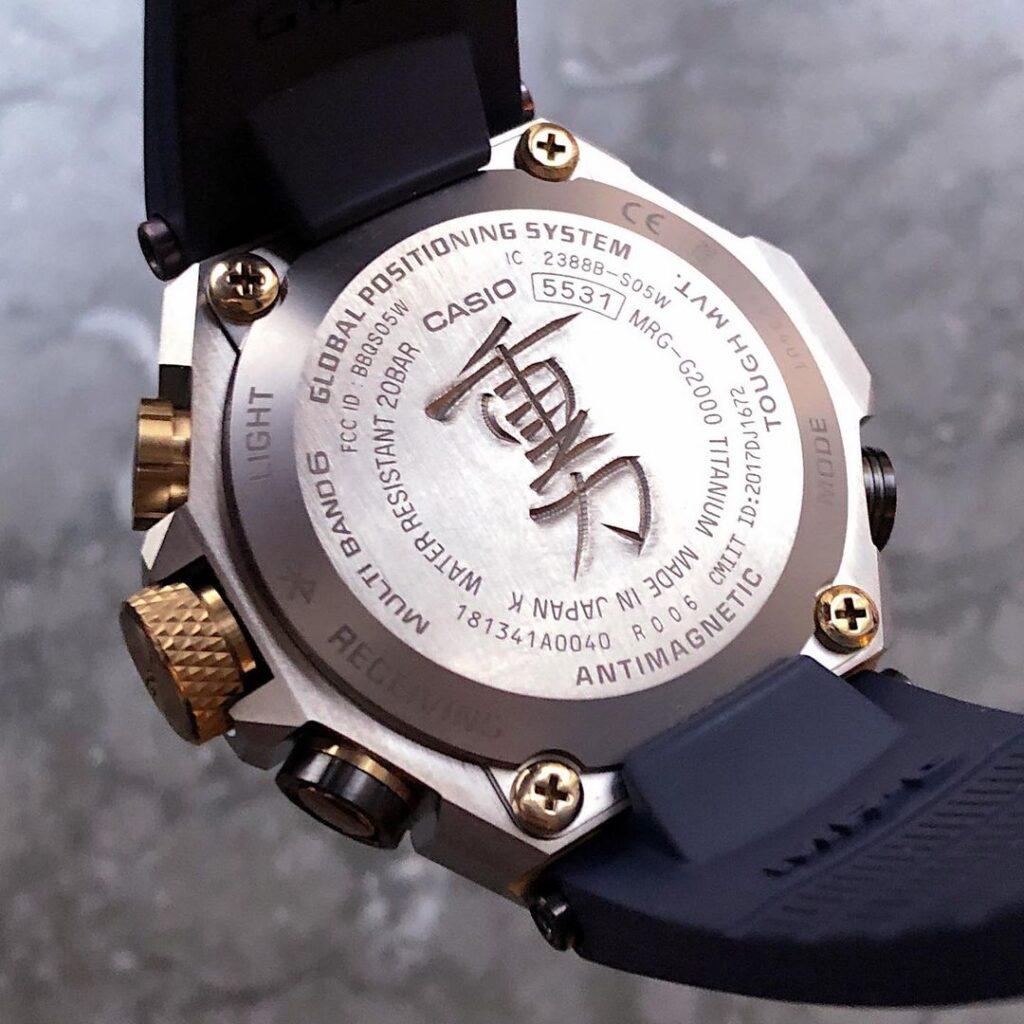
The caseback often features markings or engravings that provide information about the watch’s manufacturer, model, and serial number. In some models, the caseback is also see-through, offering a glimpse of the inner workings of the watch.
Note: We recently published two in-depth articles about the different types of watch backs and the best tools for opening the watch back. Check them out for an in-depth understanding of the watch backs.
13. Watch Movement
The watch movement is the engine that powers a timepiece and is the heart of a watch. It is responsible for keeping accurate time and is the driving force behind a watch’s functions.
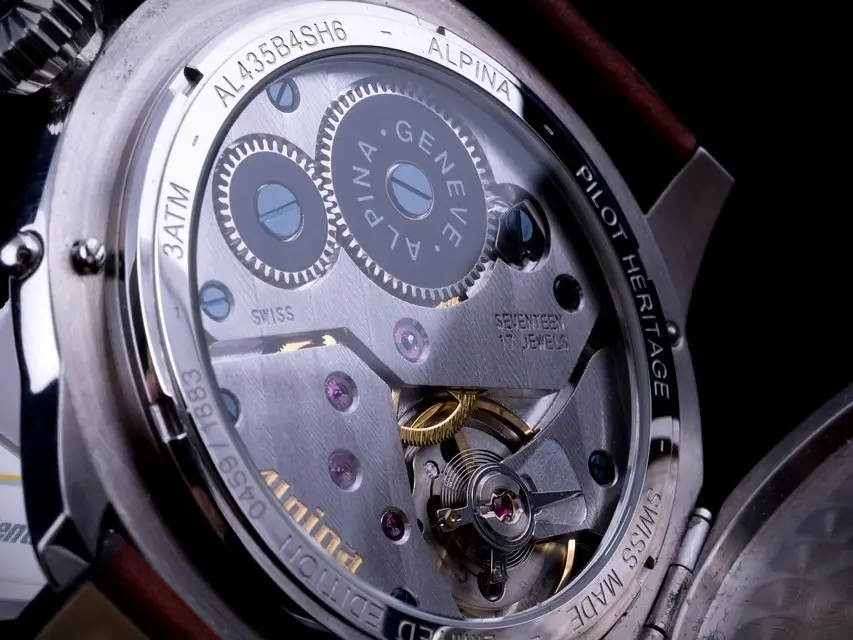
There are two main types of watch movements: mechanical and quartz. Mechanical movements use a mainspring that is wound by hand or by an automatic winding mechanism, while quartz movements use a battery to power a quartz crystal that vibrates at a very precise frequency. The movement type affects the accuracy, maintenance, and cost of the watch, and is an important factor to consider when choosing a watch.
Conclusion
This beginner’s guide has covered the various parts of a watch including the case, bezel, crown, lugs, dial, hands, day/date window, crystal, subdials, straps, clasps, casebacks, and movement.
Understanding these parts will not only help you choose the right watch for you, but it will also give you a deeper appreciation for the intricate timepieces that keep us on time and in style. Whether you are a seasoned collector or just getting started, knowing about the different components of a watch is a crucial step in developing your knowledge and passion for watches.
If you’re interested in learning more about watches, be sure to check out our other blog posts for comprehensive and in-depth information on different aspects of watchmaking.
Great overview! One suggestion – it would be helpful to go a bit deeper on movements. Explain differences between quartz, mechanical, automatic. Pros and cons of each. A bit more technical detail would give readers greater understanding.
Thank you for the thoughtful feedback! Actually, In this introductory post, we aimed to briefly introduce some of the main parts of a watch. However, we have published an in-depth blog post dedicated to types of movement, including quartz, manual and automatic, outlining their pros and cons. Additionally, we have also published posts covering other components such as watch crystals, cases, hands, straps, and more. Thank you for your interest in our content!